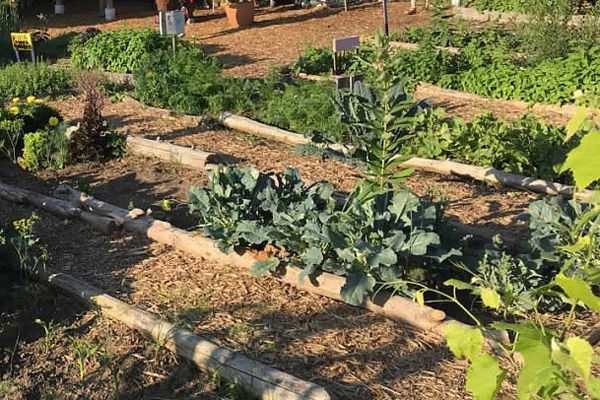The Only Guide for City Blooming
The Only Guide for City Blooming
Blog Article
The City Blooming PDFs
Table of ContentsThe Ultimate Guide To City BloomingSome Known Facts About City Blooming.The City Blooming PDFsThe Facts About City Blooming RevealedThe 25-Second Trick For City Blooming
Intrigued in expanding food for sale in the City of Chicago? Assuming regarding beginning a neighborhood garden? Adjustments to the Chicago Zoning Regulation allow agricultural usages like neighborhood gardens and urban ranches in several parts of the city. Below is a checklist of often asked questions concerning the regulations and policies that cultivators should take into consideration when planning a city farming task.
The zoning modification does not change any various other codes taking care of composting, structure authorizations, buying or renting City owned building, business licenses or environmental contamination. There are existing codes that control these issues and they stay in complete impact and might apply to your project. Community gardens are generally owned or managed by public entities, public organizations or community-based organizations and preserved by volunteers.
Urban ranches grow food that is meant to be sold, either on a nonprofit or for-profit basis. Due to their industrial purpose, metropolitan farms require a service certificate.
The Ultimate Guide To City Blooming
The amount of garden compost product can not go beyond 25 cubic yards at any type of offered time according to the criteria in 7-28-715 of the City's Municipal Code. Because the soil at a lot of brand-new yard sites needs changing, compost, dirt, wood chips, or various other materials can be acquired to construct or enhance the growing space.

If a building permit is required after that the hoophouse will certainly be thought about an accessory building. You can discover out more regarding the structure permit needs by calling the Division of Buildings. The 25,000-square-foot size limitation is planned to avoid a single area yard from dominating an offered block or interfering with the block's existing household or commercial personality.
The limit does not put on gardens located in Public Open Area (POS) districts. Can there be greater than one area garden that is 25,000 square feet on a solitary block? Yes. The size limit uses to private gardens, not to private blocks. No. Fence is not required, nevertheless, yards that have large car park locations may be called for to set up fence or various other landscaping functions.
Not known Factual Statements About City Blooming
B1 & B2 districts require that all business usage activities be performed inside your home. R areas restrict industrial activity. The policies show the objective and intent of the Zoning Code. Is fence needed for city farms? Yes. Fences may be needed, in addition to landscaping and screening, for specific parking lot and outdoor work or storage areas depending upon place and the certain task occurring.
Yes. Urban ranches need structure authorizations and zoning authorizations before building. Other types of city evaluation may be required depending on specific frameworks, tasks, dimension, landscaping, licensing, public heath and stormwater management issues. Much of these requirements are determined in the task layout or permitting procedure, nonetheless, the candidate may be responsible to individually determine particular licenses or allows that might be needed.
Yes. The kind of license is determined by what is happening at the site. The Division of Organization Matters and Consumer Defense can assist determine the specific kind of business permit that's needed. Yes. Off street parking is needed for many commercial jobs in Chicago. The required number of vehicle parking spaces is based on the variety of staff members working with website and not the square footage of the expanding room.
The 6-Second Trick For City Blooming

A city ranch can offer garden compost material produced on site, however, the procedure must conform with the policies in 7-28-715 of the Chicago Municipal Code. Aquaponic systems are allowed inside your home on metropolitan farms in numerous zoning districts.
As much as five hives or colonies of honey might be Continue kept as an accessory use. Beekeepers should sign up with the Illinois Department of Agriculture. To learn more about the proposed zoning amendment you might call the Department of Housing and Economic Development, Bureau of Preparation and Zoning at 312.744.8563.
Farming in cities and urban areas A city ranch in Chicago. Urban agriculture describes various practices of cultivating. https://mcliouw-keings-breuncy.yolasite.com/, processing, and distributing food in metropolitan locations. The term also uses to the location tasks of pet husbandry, aquaculture, beekeeping, and horticulture in a city context. Urban farming is identified from peri-urban agriculture, which occurs in backwoods at the edge of residential areas.
The Definitive Guide for City Blooming
It can involve a motion of natural farmers, "foodies" and "locavores", who seek to develop socials media established on a common principles of nature and area holism. These networks can develop using formal institutional assistance, becoming integrated into regional town as a "shift community" motion for lasting city growth.
The extra straight access to fresh vegetable, fruit, and meat items that may be realised via metropolitan agriculture can improve food protection and food security while reducing food miles, bring about reduced greenhouse gas discharges, thereby adding to environment modification reduction. Several of the initial evidence of metropolitan agriculture originates from Mesopotamia.
Report this page